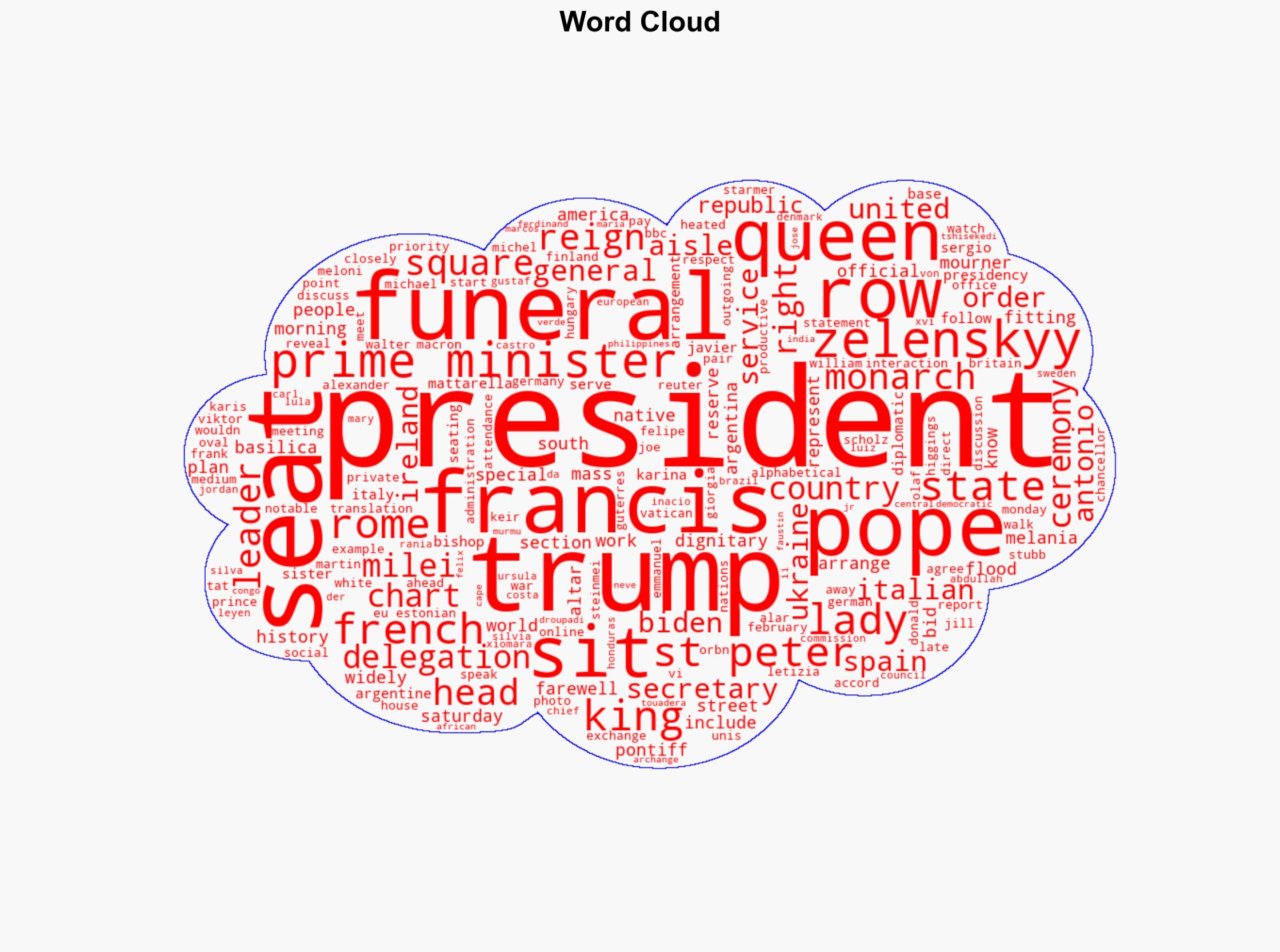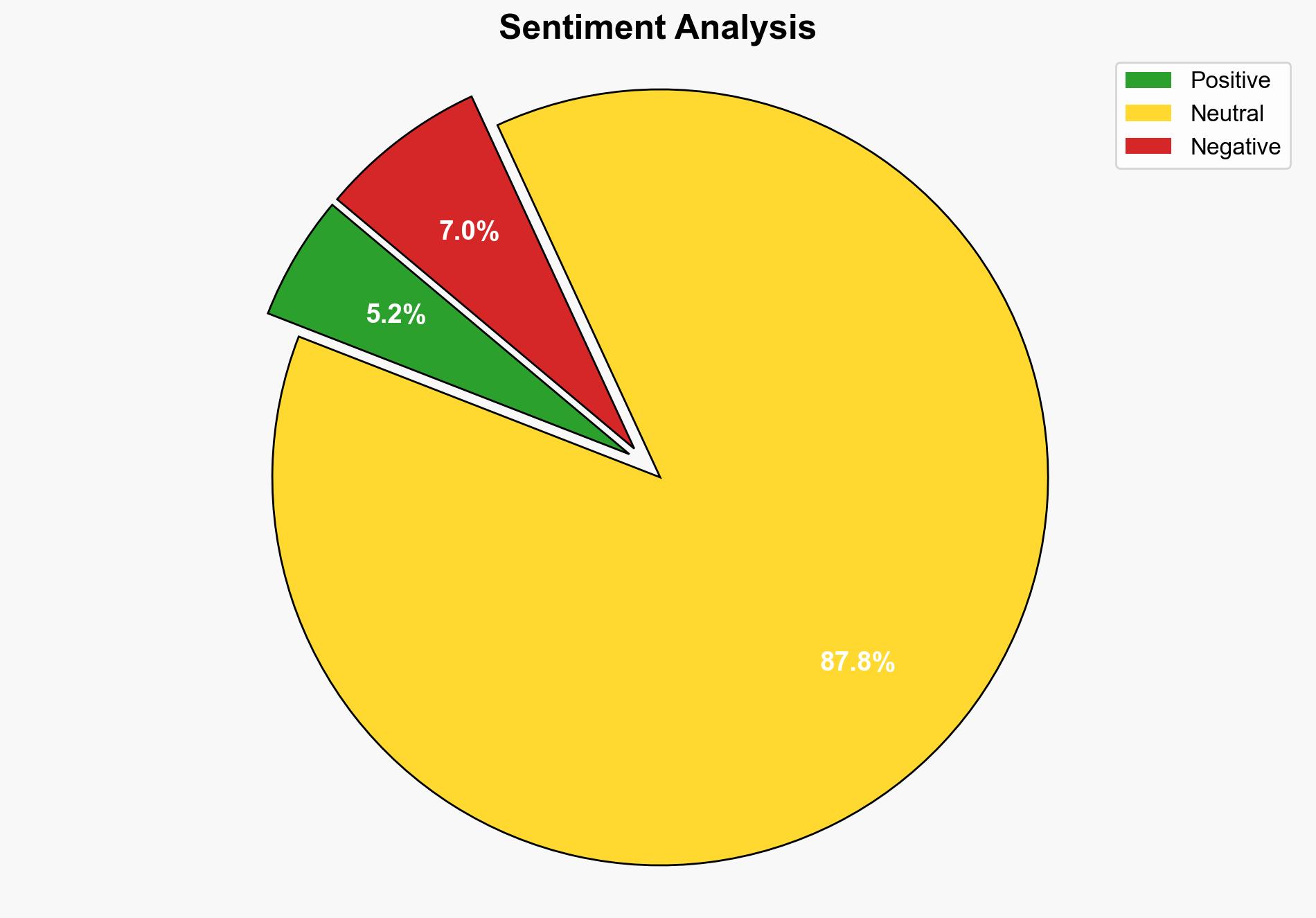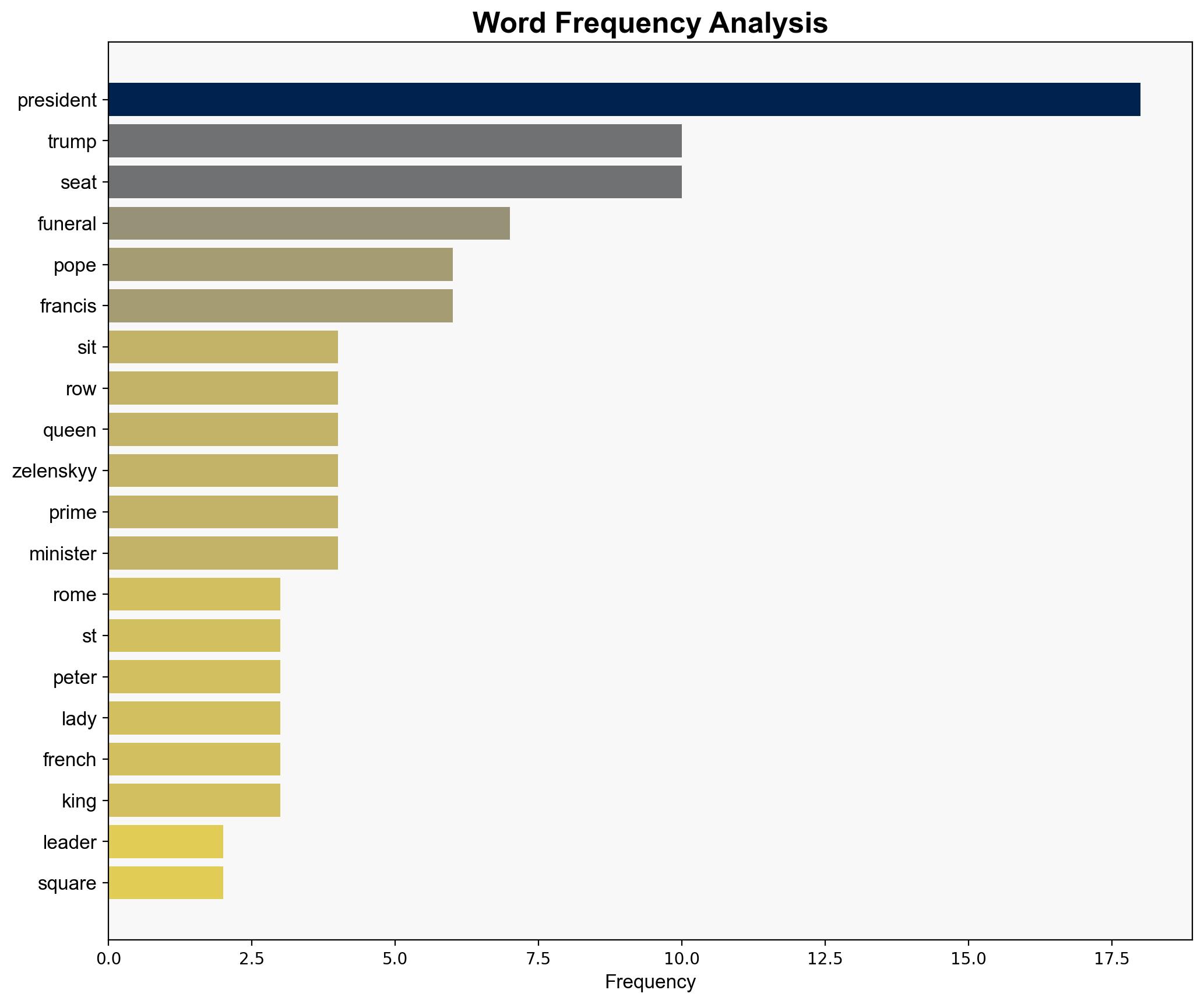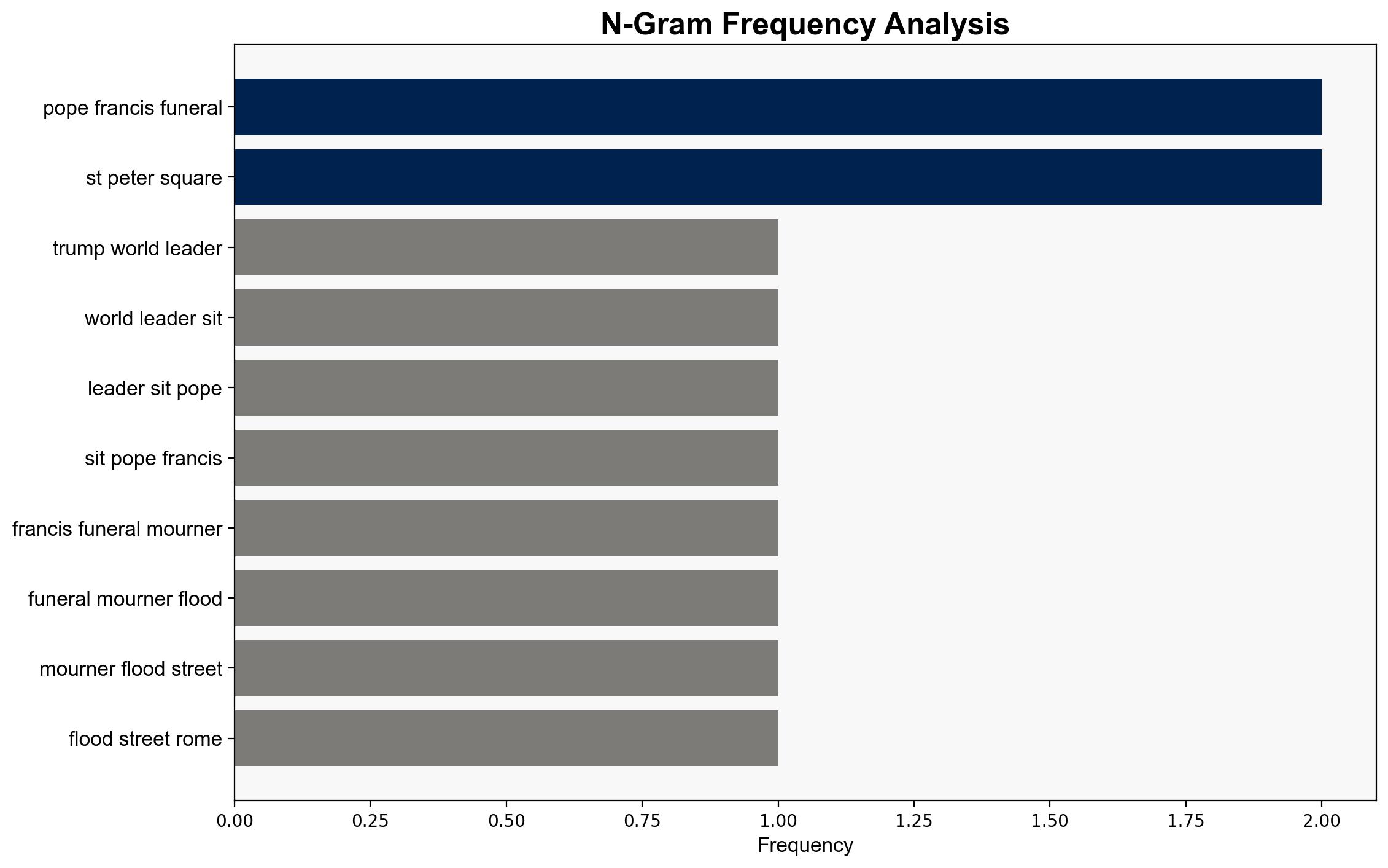Where Trump other leaders sat at Pope Francis’ funeral – CBS News
Published on: 2025-04-26
Intelligence Report: Where Trump and Other Leaders Sat at Pope Francis’ Funeral – CBS News
1. BLUF (Bottom Line Up Front)
The seating arrangement at Pope Francis’ funeral highlighted diplomatic protocols and geopolitical dynamics among attending world leaders. Key figures, including Donald Trump and Volodymyr Zelenskyy, were strategically placed, reflecting current international relations. The event underscored the importance of diplomatic presence and the subtle nuances of international seating arrangements as a reflection of global political standings.
2. Detailed Analysis
The following structured analytic techniques have been applied to ensure methodological consistency:
SWOT Analysis
Strengths: The event provided a platform for diplomatic engagement and soft power projection.
Weaknesses: Potential for misinterpretation of seating arrangements leading to diplomatic tensions.
Opportunities: Strengthening bilateral relations through informal interactions.
Threats: Heightened scrutiny of interactions could exacerbate existing tensions.
Cross-Impact Matrix
The seating arrangement influenced diplomatic interactions, potentially affecting ongoing negotiations and alliances. The proximity of leaders like Donald Trump and Volodymyr Zelenskyy could impact perceptions of bilateral relations, especially in the context of the Ukraine conflict.
Scenario Generation
Best Case: Enhanced diplomatic relations and cooperation among attending nations.
Worst Case: Misinterpretations leading to diplomatic rifts.
Most Likely: Maintenance of status quo with minor diplomatic engagements.
3. Implications and Strategic Risks
The seating arrangement at the funeral could influence diplomatic relations and public perceptions. The presence of key leaders like Donald Trump and Volodymyr Zelenskyy, seated in proximity, may be scrutinized for signs of shifting alliances or tensions. This event serves as a reminder of the symbolic power of diplomatic gestures and their potential to impact international relations.
4. Recommendations and Outlook
- Monitor diplomatic engagements and public statements following the event for shifts in alliances or tensions.
- Leverage opportunities for informal diplomatic dialogues to address ongoing conflicts and foster cooperation.
- Prepare for potential diplomatic fallout by reinforcing communication channels and clarifying intentions.
5. Key Individuals and Entities
Donald Trump, Melania Trump, Volodymyr Zelenskyy, Javier Milei, Karina Milei, Sergio Mattarella, Alar Karis, King Felipe VI, Queen Letizia, Alexander Stubb, Joe Biden, Jill Biden, Prince William, Keir Starmer, Emmanuel Macron, Frank-Walter Steinmeier, Olaf Scholz, Giorgia Meloni, Viktor Orbán, Michael Higgins, Michel Martin, António Guterres, Ursula von der Leyen, Antonio Costa, King Carl XVI Gustaf, Queen Silvia, Queen Mary, King Abdullah II, Queen Rania, Luiz Inácio Lula da Silva, Xiomara Castro, Ferdinand Marcos Jr., Droupadi Murmu, Faustin-Archange Touadéra, Félix Tshisekedi, José Maria Neves.
6. Thematic Tags
(‘diplomacy, international relations, geopolitical dynamics, global leadership’)





